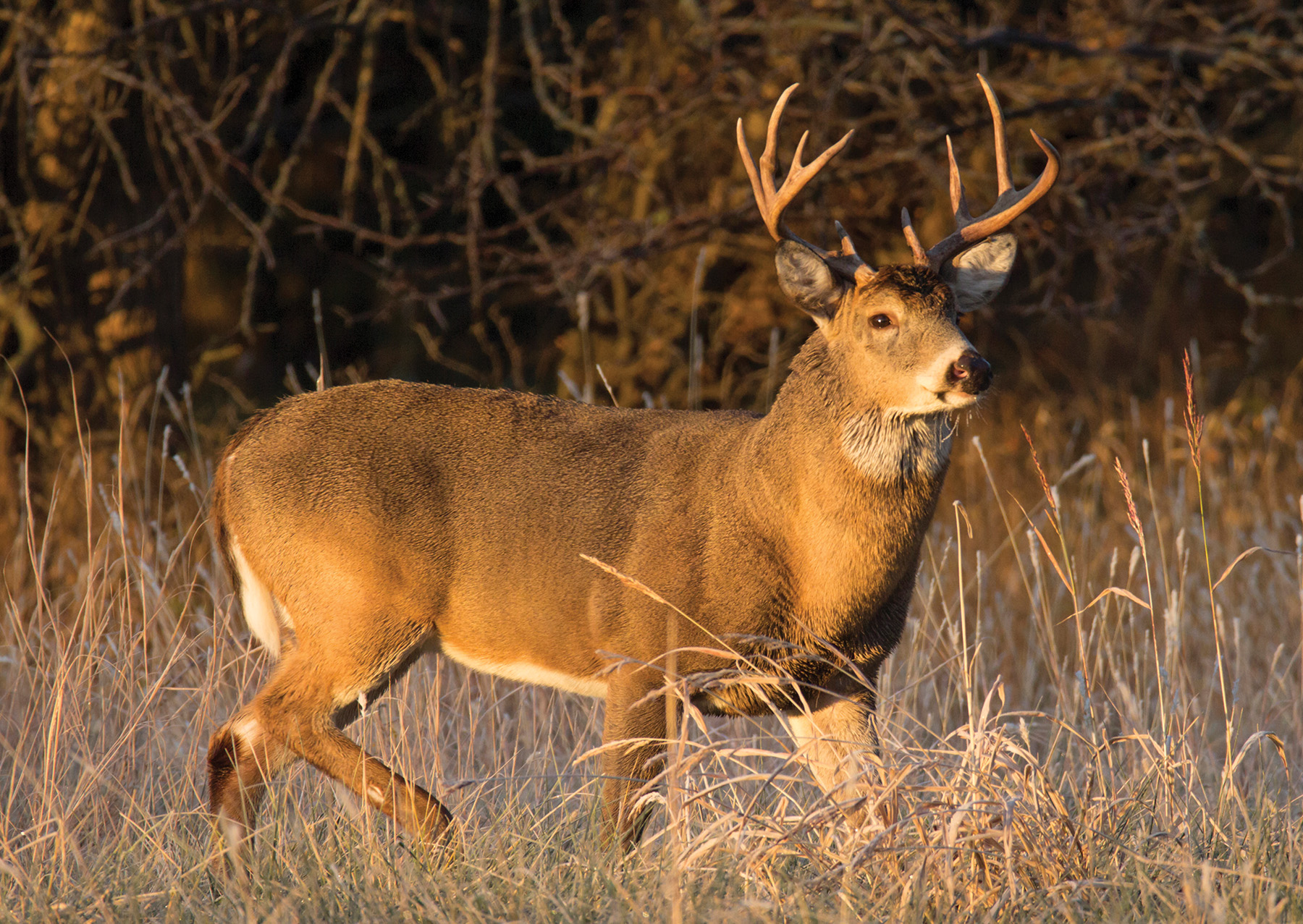Whitetails 365: Leveraging Conditions for Bowhunting

Whitetails 365: Weathering The Hunt: Leveraging Conditions for Bowhunting
October holds so much hope and excitement for Iowa bowhunters. Finally, the season has opened. You no longer have to scout from afar and can make a plan to hunt. With the transition towards fall, comes a unique set of weather patterns that can significantly impact deer behavior. Understanding how these conditions influence deer movement is key to maximizing your chances of success during October. This is the time, if you can pattern a deer, to get on him and make your plan come together. However, you want to be patient, and use the weather for your advantage.
Wind: The Silent Hunter’s Enemy
Wind is a critical weather factor for bowhunters. Deer possess an extraordinary sense of smell, and even the slightest scent can spook them. I have said it before, and I’ll say it again, do not hunt a stand if the wind is wrong. You will regret it and do more harm than good! You want to hunt with the wind carrying your scent away from the deer.
It will always be possible for a wise old doe or a buck to circle down wind, and you always have the chance of getting winded every time you hunt. But, you want to have the wind blowing away from where you expect the deer to be. Give yourself the best chance for a shot that you can. Remember, wind direction can change throughout the day, so be prepared to adapt accordingly. I’m not afraid to move out of a stand if it is the wrong wind.
A gentle breeze can be a hunter’s best friend, masking your scent and movement. A steady, light wind is ideal, carrying your scent away from your target while simultaneously obscuring your presence. The rustling leaves and swaying branches create a natural cover, making it harder for deer to pinpoint your location. This is ideal for me. However, when the wind picks up, things get complicated. Erratic wind direction can make scent management a nightmare. Deer become more alert in these conditions, relying heavily on their senses to stay safe. They seem spooky and will go into thicker cover when those gusts go over 25 mph.
The worst-case scenario is no wind at all. In calm conditions, every rustle and creak is amplified, making it incredibly difficult to remain undetected. Your scent hangs heavy in the air, creating a scent cone that deer can detect from a distance. Ultimately, wind is a dynamic force that requires constant adaptation. Experienced hunters learn to read the wind like a weatherman, anticipating shifts and adjusting their strategies accordingly. By understanding how wind affects deer behavior, you can significantly increase your chances of a successful hunt.
One of the most crucial things a hunter can do to get a little “forgiveness” on scent dispersal is to exercise scent control. Whether you use a spray, ozone, shampoo, or anti-microbial suit, anything is a good place to start and everything helps. You will never become completely scent-free, but it sure helps. Sometimes I’ve had deer walk down wind, and with the right scent control, they’re not completely sure what they are smelling. Other times it will help keep a mature doe from blowing, sometimes it will give me a few more vital seconds. Sometimes, they will smell you regardless of the scent control methods you use. Play the wind, and implement scent control for the best changes though!
Pressure Systems
Barometric pressure can subtly influence deer activity. Generally, when the barometer is low and stays low, it can slightly discourage deer movement. I like to see activity in the barometric pressure. A falling barometer can be a good time to hunt as a storm is rolling in. The deer seem to get on their feet as they prepare for a weather change. Conversely, a rising barometer, meaning high pressure, often leads to increased deer activity. However, these trends aren’t absolute and can vary based on local conditions and I strongly believe other factors can override the barometric effects. This can all go out the window once we turn the page into November and the rut heats up.
Cold fronts are what we live for in October. We love the increased deer activity. The drop in temperature and barometric pressure can trigger a feeding frenzy as deer prepare for colder conditions. Focus on areas with abundant food sources, such as agricultural fields or food plots. Early mornings and late evenings are prime times to hunt during cold fronts. Even if you sit in a spot going out of a known bedding area, the cold front might be just what you need to get the deer out of their bed a little earlier in the evening.
Rain can significantly impact deer behavior. A light drizzle can be a blessing in disguise, masking human scent and creating a more level playing field. Light rain often doesn’t deter deer, and they may even become more active. Once it picks up they will hunker down for the duration. That said, the aftermath of a storm can be a prime hunting time. As the rain subsides, deer often emerge to feed and resume their normal routines. Another factor to consider is the timing of the rain. A pre-dawn rain can create ideal hunting conditions as the day progresses. The air is clean, the scent is washed away, and deer are active. As soon as the rain subsides, I like to be in a tree and will catch good movement. I’ve even hunted during late mornings. Deer like to get up after a heavy rain.
Mastering the art of reading weather patterns is essential for any successful bowhunter. Being able to use that by leveraging conditions for bowhunting is extremely helpful. By understanding how wind, pressure systems, temperature, and precipitation influence deer behavior, you can increase your odds of encountering mature bucks during the crucial month of October. If you can, be ready to hunt that first cold snap in October, and always be prepared to adapt your strategy based on what you observe in the field.
By Aaron McKinney


